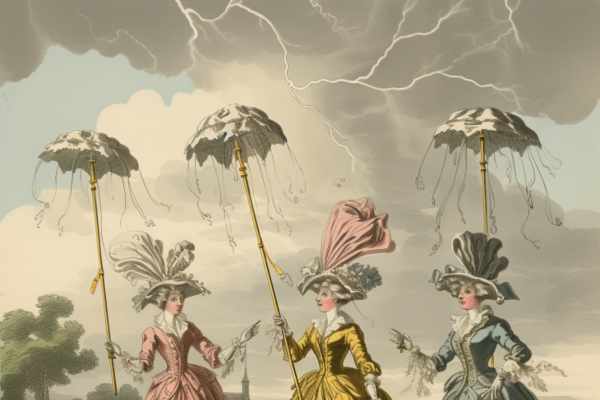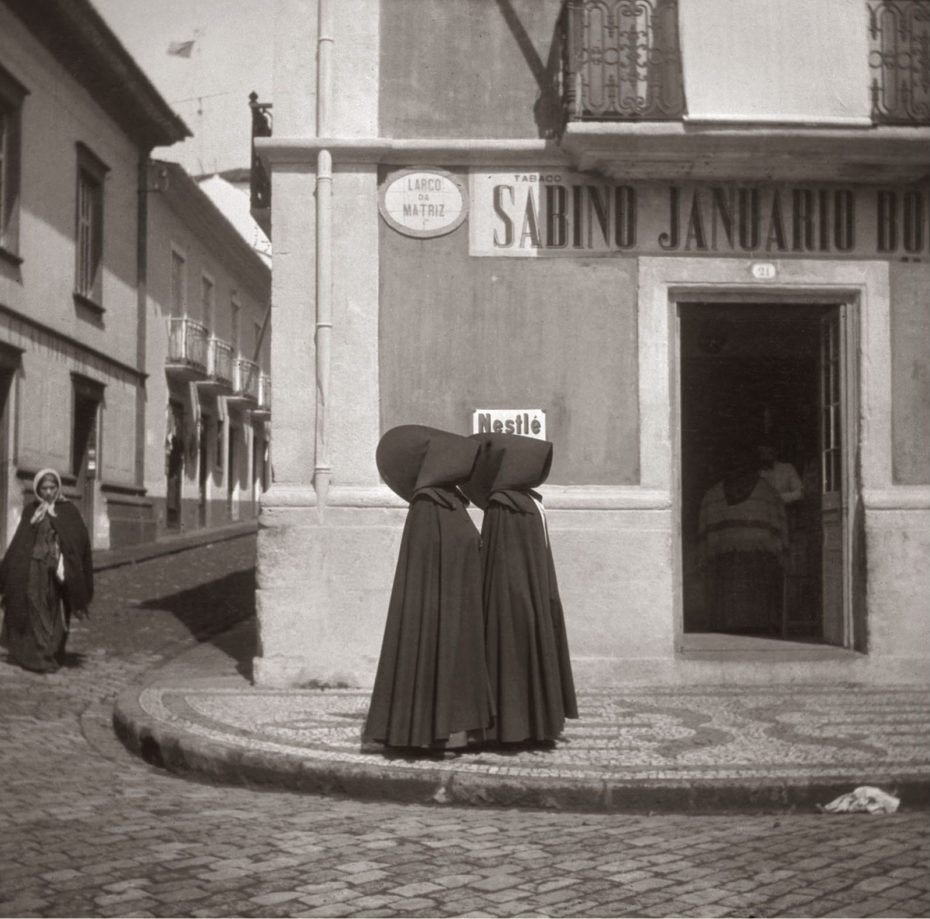
Somewhere in between the Handmaids Tale and the Grim Reaper, there were the unnerving ladies of the Azores Islands. “Enveloped in their large hooded cloaks, the Azorian women seems to flit about like phantoms,” wrote Elisée Reclus in a 19th century encylopedic series on the earth’s inhabitants. With radical doomsday preppers making headlines with their makeshift hazmat suits, we couldn’t help but get sidetracked with these strange and ominous get-ups of yore…
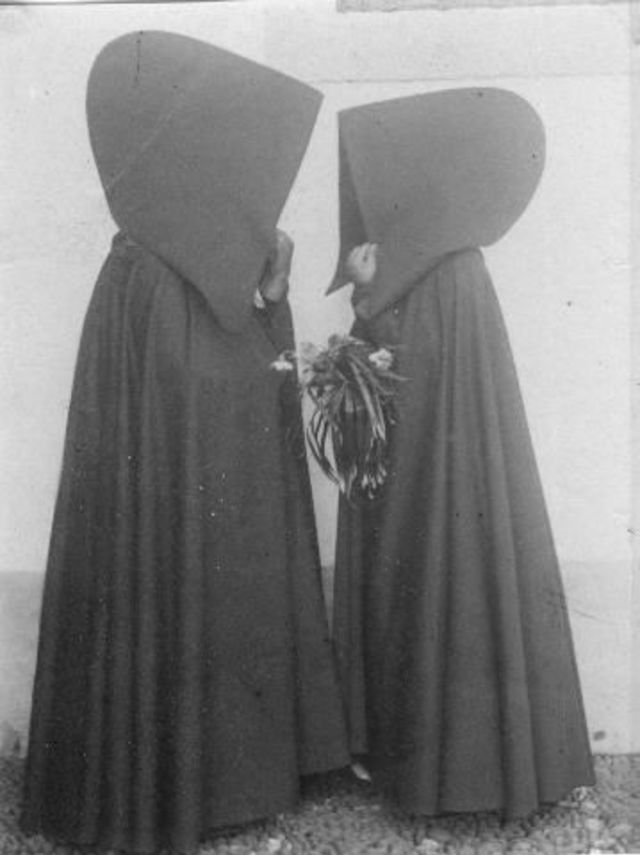
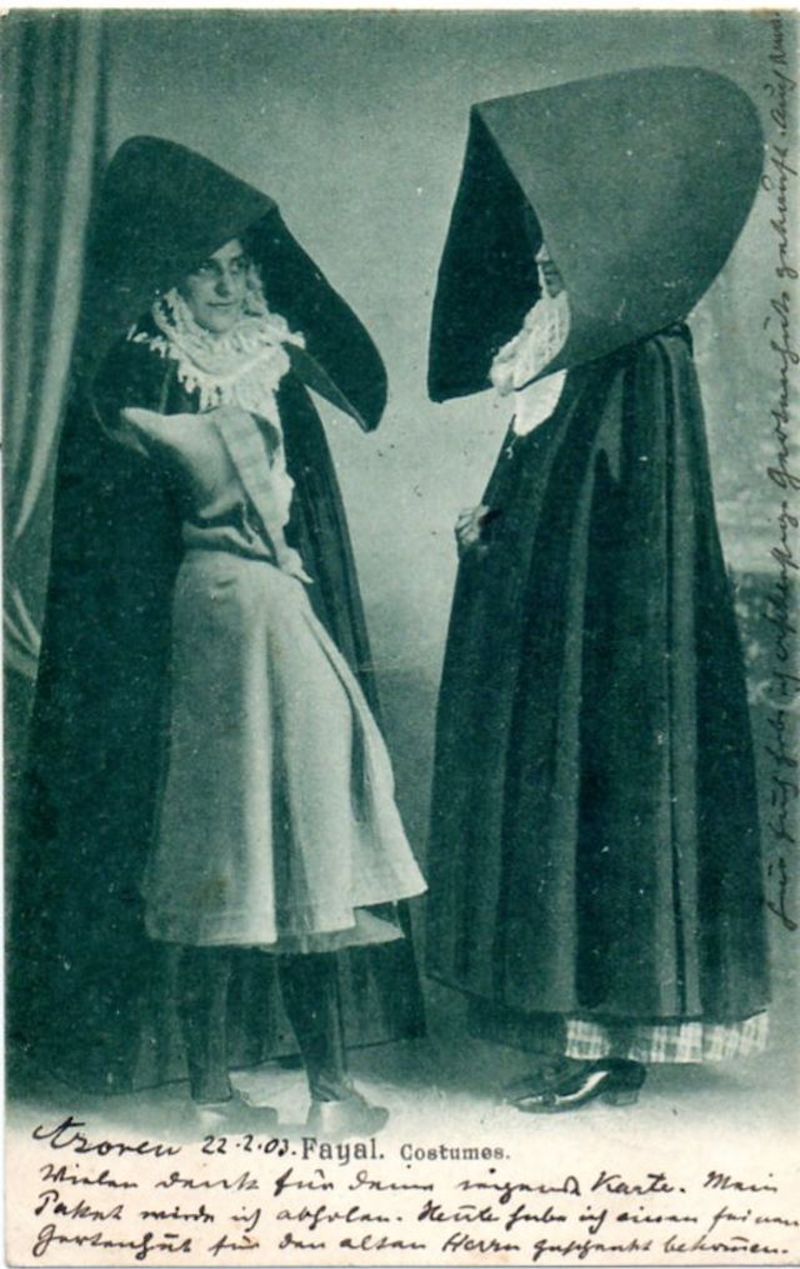
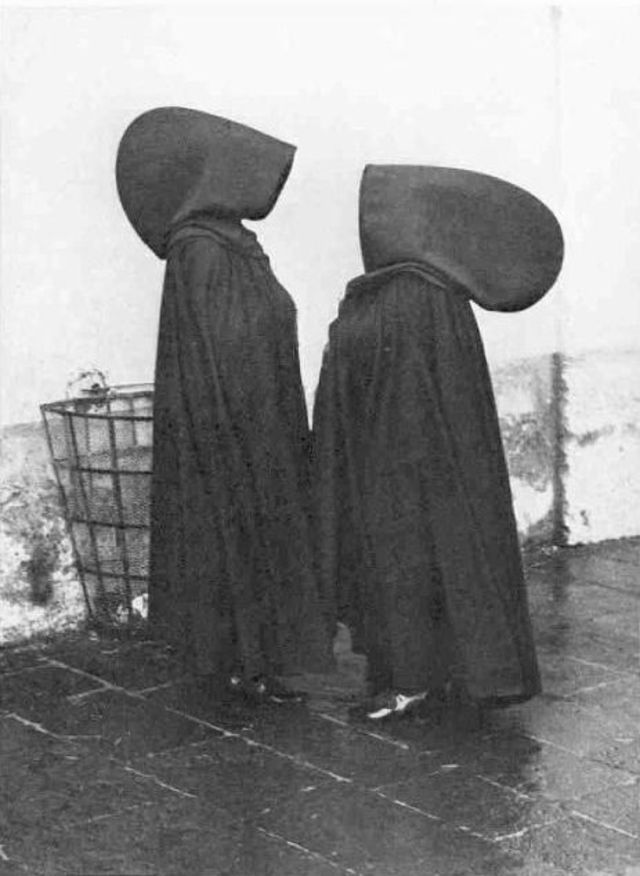
Known as the ‘capote e capelo’ in Portuguese, Mark Twain called the Azorean hood “a marvel of ugliness”. In his travel book The Innocents Abroad published in 1869, he described the traditional garment he saw worn by women on the archipelago in the middle of the Atlantic, west of Portugal (yes, those beautiful islands that have rainforests and lakes inside their volcanos).
This hood is of thick blue cloth, attached to a cloak of the same stuff [….] It stands up high, and spreads abroad, and is unfathomably deep. It fits like a circus tent, and a woman‘s head is hidden away in it like the man’s who prompts the singers from his tin shed in the stage of an opera [….] a woman can’t go within eight points of the wind with one of them on; she has to go before the wind or not at all.”
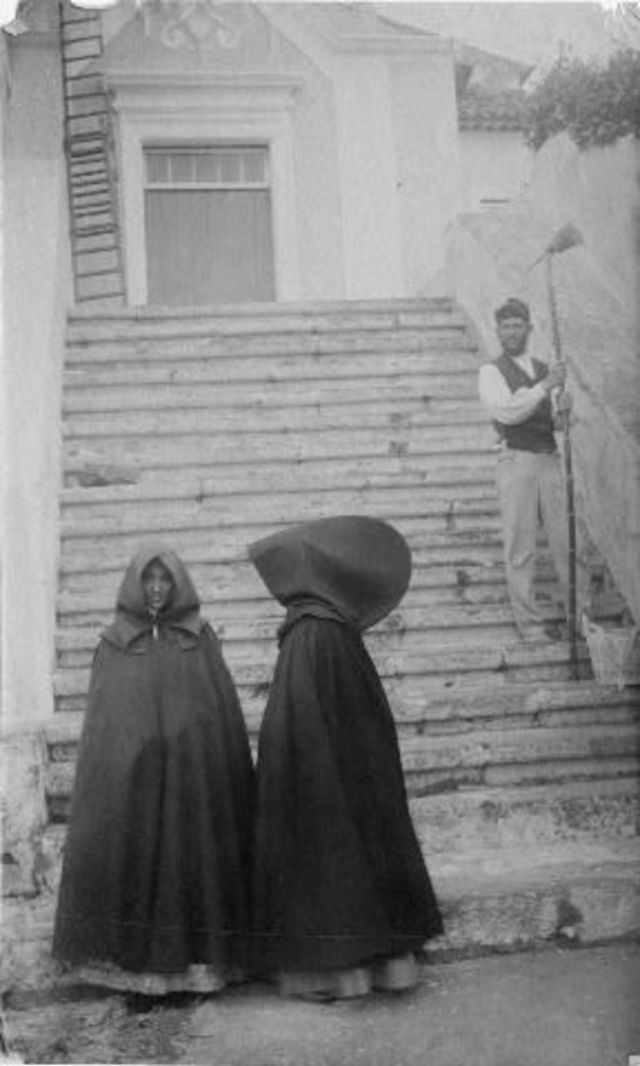
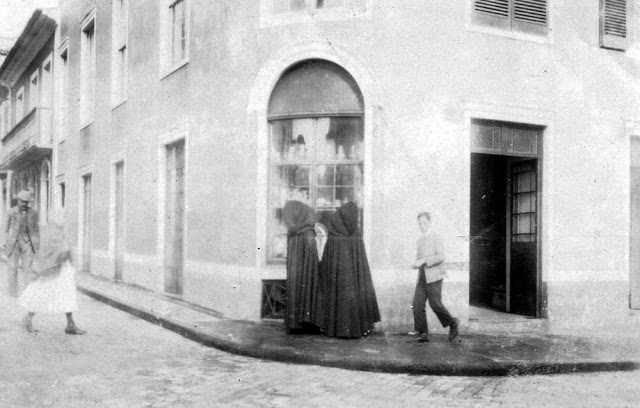
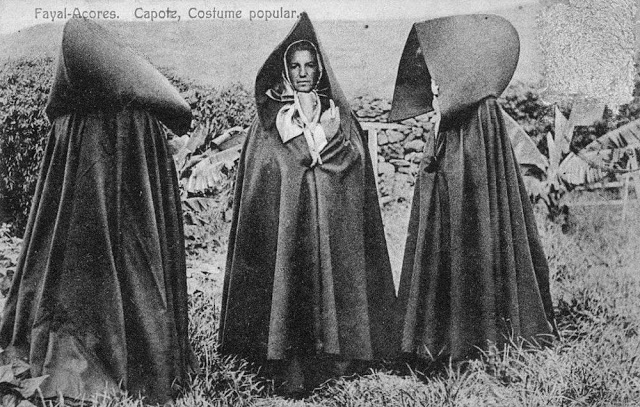
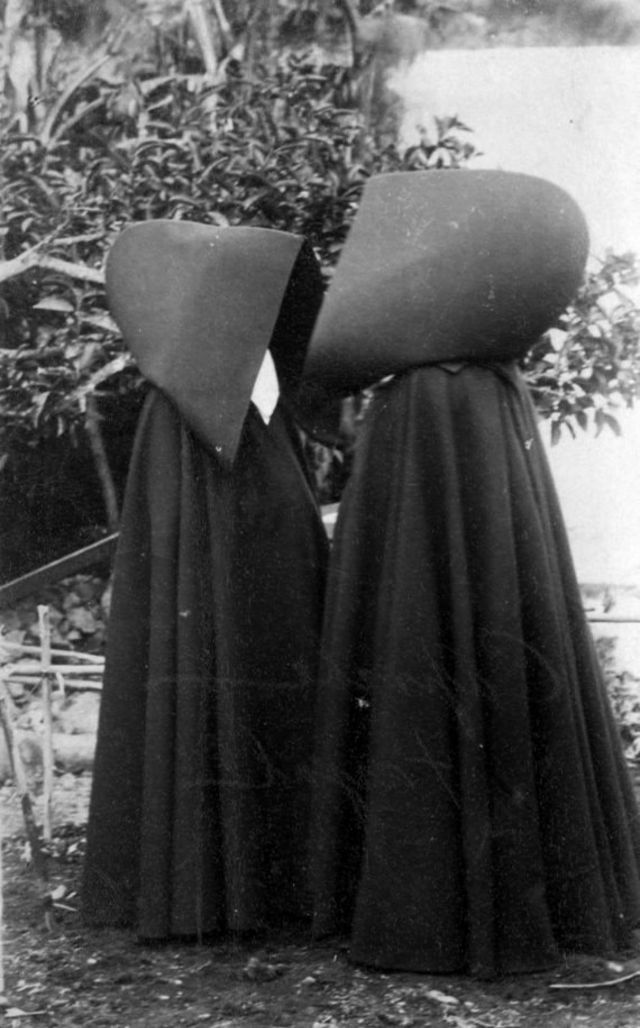
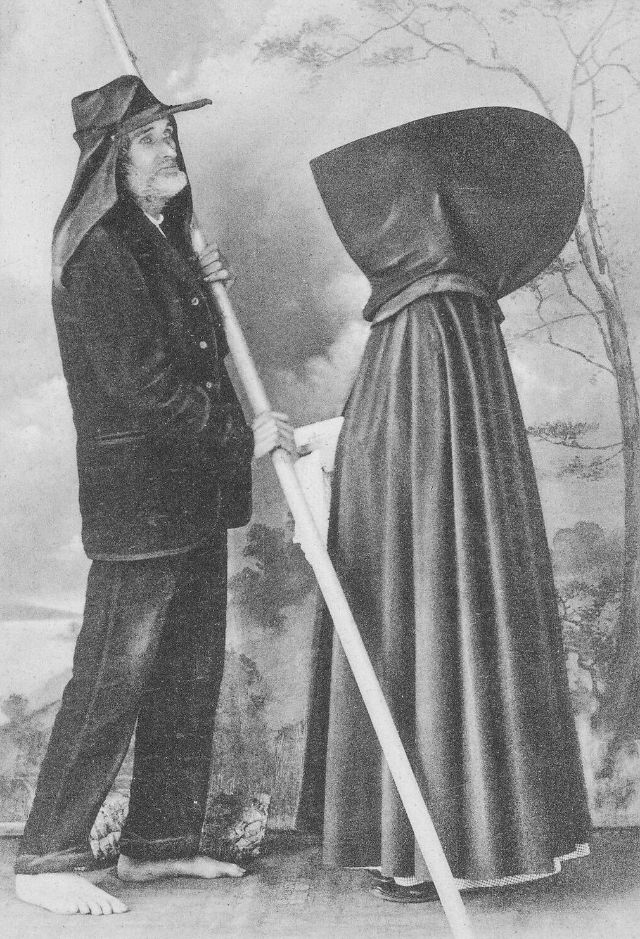
The origins of the style are up for debate. When first visited by the Italian and Portuguese navigators, the Azores were found to be uninhabited. Some suggest the fashion came from Flemish colonists, while and others state that the garment derived from a a combination of the mantles (sleeveless cloaks) and cowls (loose hoods) that were adopted in Portugal in medieval times.
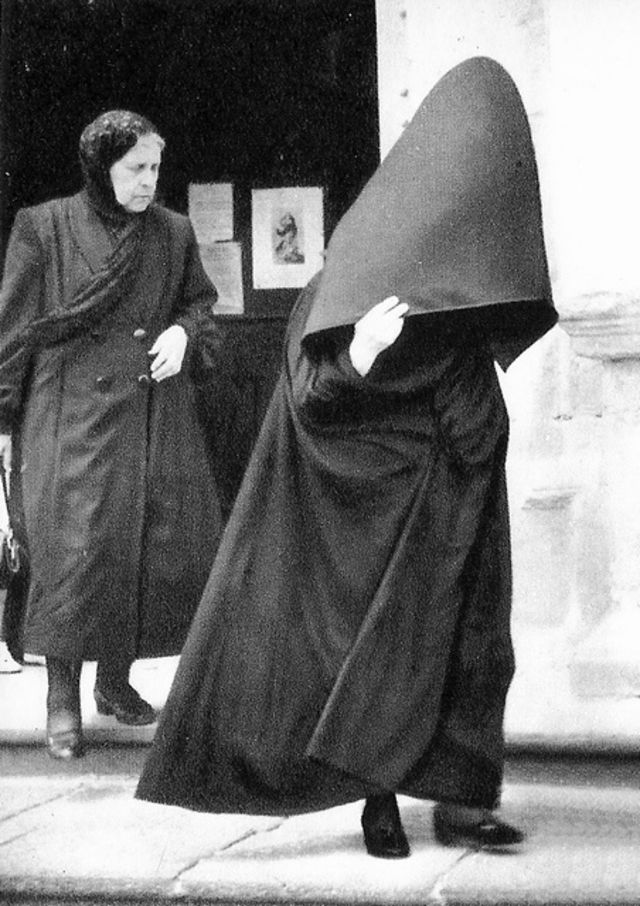
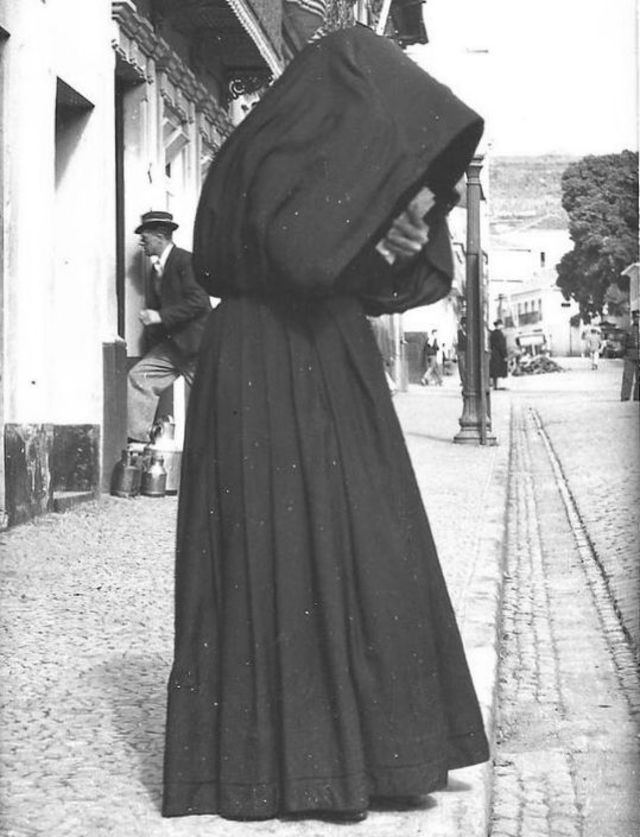
We have a few theories too – here a few clues we found in the 1878 copy of The Earth and its Inhabitants in the British Library Archives:
“the Azorians are very religious … tending to foster that sentiment of fear […] Epidemics occasionally break out and the old chronicles speak of pestilence […] At present gastric and typhoid fevers are endemic…”
Okay, so there was probably a need to keep your distance from others in an already superstitious community. Throw in a little “Handsmaid’s Tale” narrative à la Margaret Atwood and perhaps you’ve got a unique fashion trend in the making…
Many of these hoods are still so contrived as to meet in front, leaving only a narrow opening for the wearer with which to see without being seen … In the district of San Miguel [the biggest island in the Portuguese Azores] the wife, when paying a visit or going to mass, may not walk by the side of her husband, who struts majestically a few paces in front. Formerly the ladies in the towns could not even go abroad to make their purchases, but all had to do all their shopping at home, never leaving the female apartments except to visit the church. At the approach of a man it was even etiquette to turn towards the wall in order to avoid a profane glance.
Elisée Reclus’ The Earth and its Inhabitants:
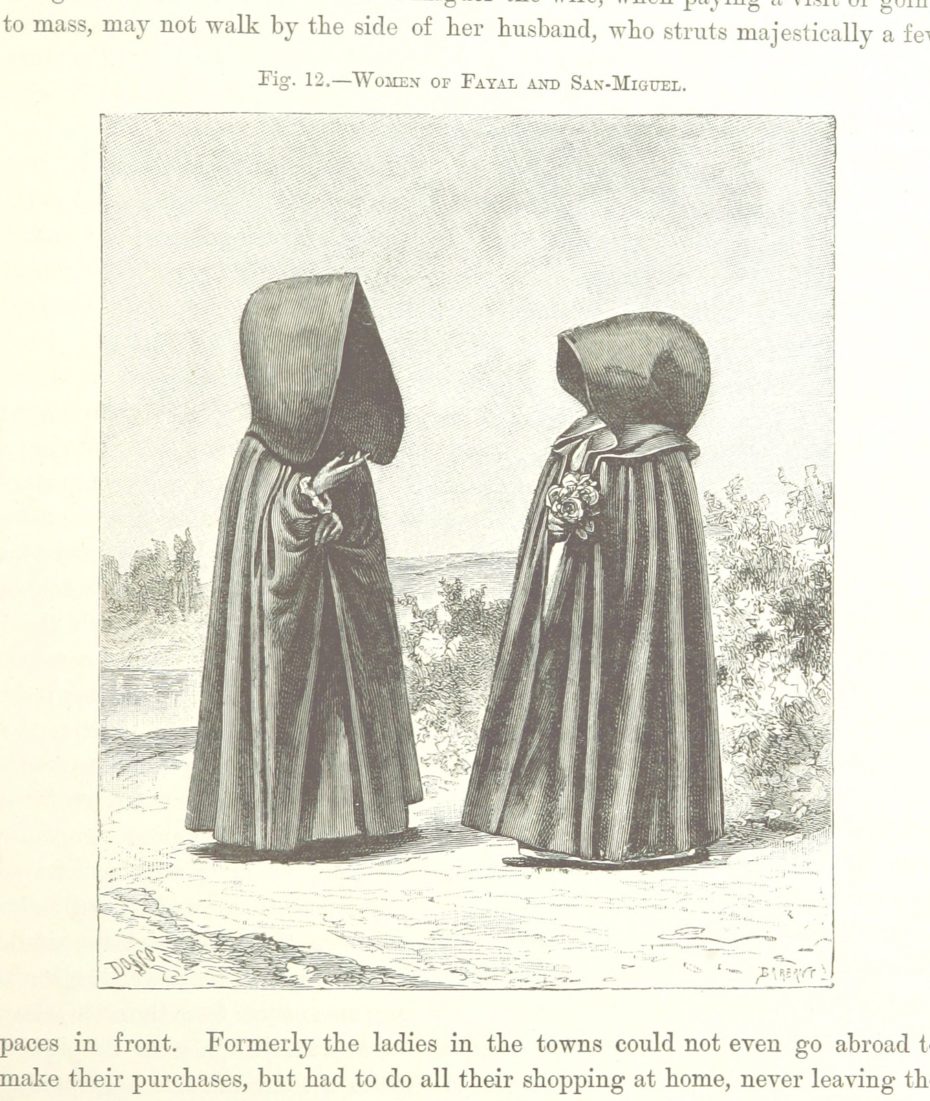
You might recognise the above image – we used it when collaging the esoteric imagery for the Keyholder’s Vault – see if you can spot it on our welcome page.
We also found a similar costume in the pages of another travel book published around the same time, worn by from Mostar, a city in southern Bosnia and Herzegovina:
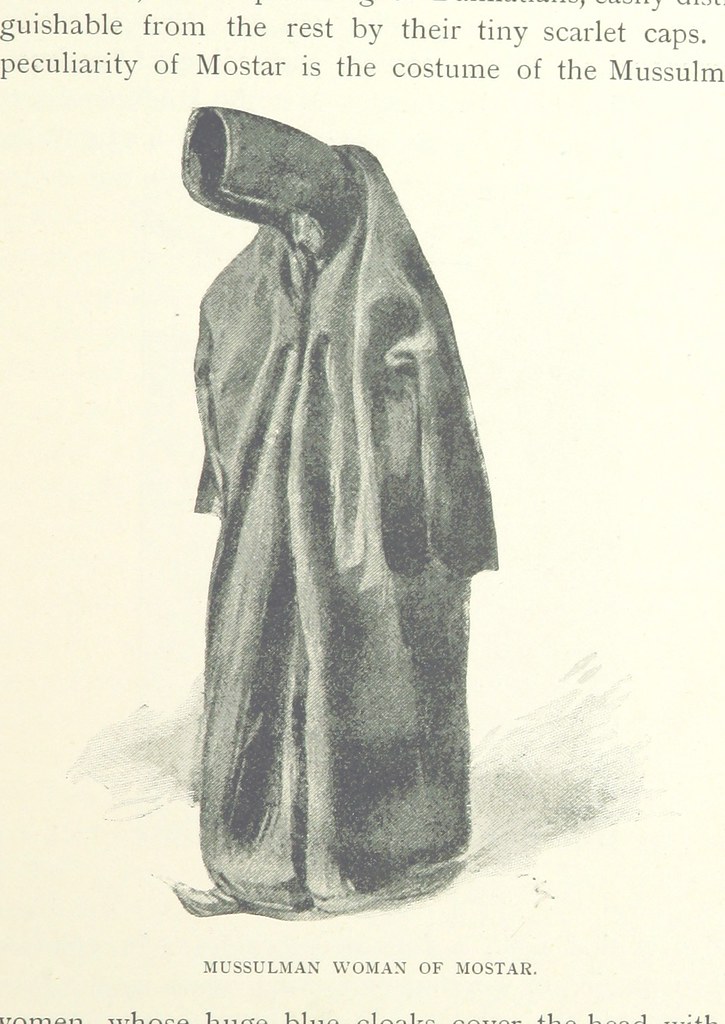
Again, the garments are described as “huge blue cloaks that cover the head with a projection in front like a vast poke-bonnet”. You wouldn’t think it possible, the Bosnian style looks even more awkward and uncomfortable than the Portuguese version…
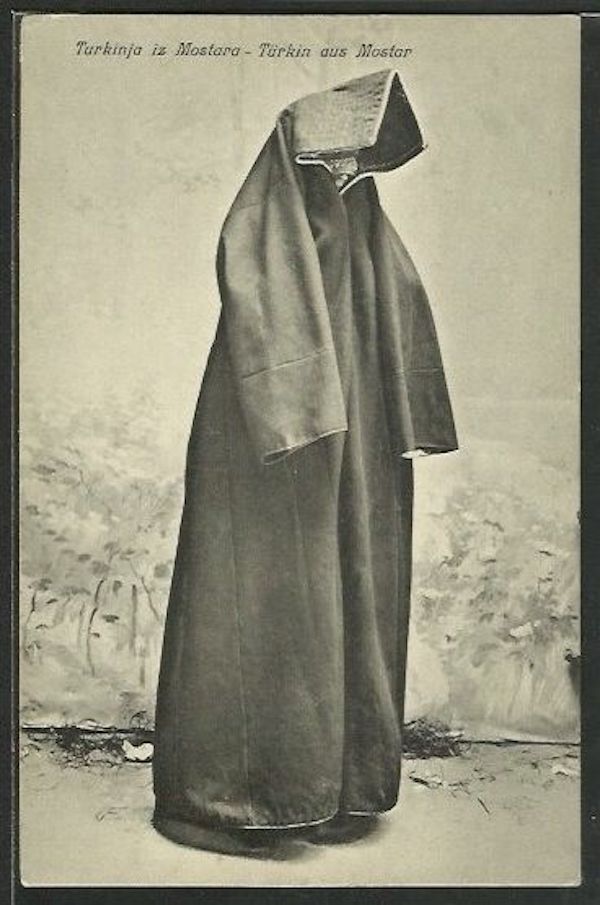
The women of the Azores stopped wearing the “capote-e-capelo” around the 1930’s, but it got us thinking about other people-repelling fashion statements of yore…
The self-distancing Crinoline:
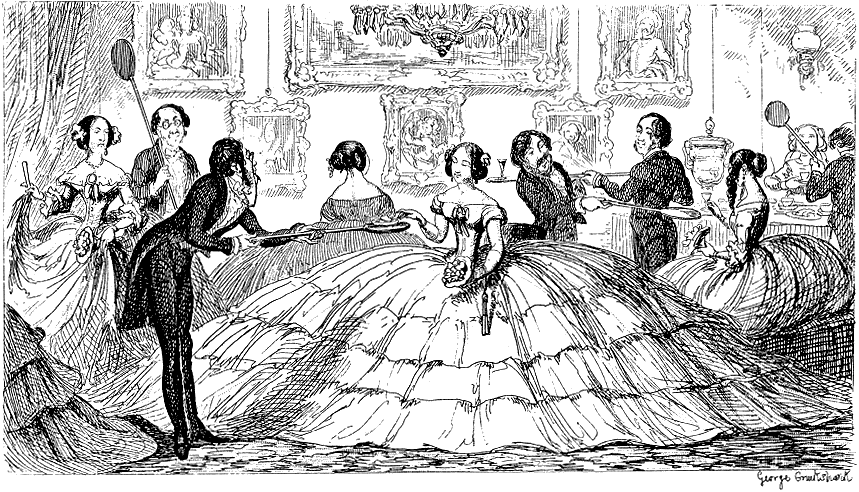
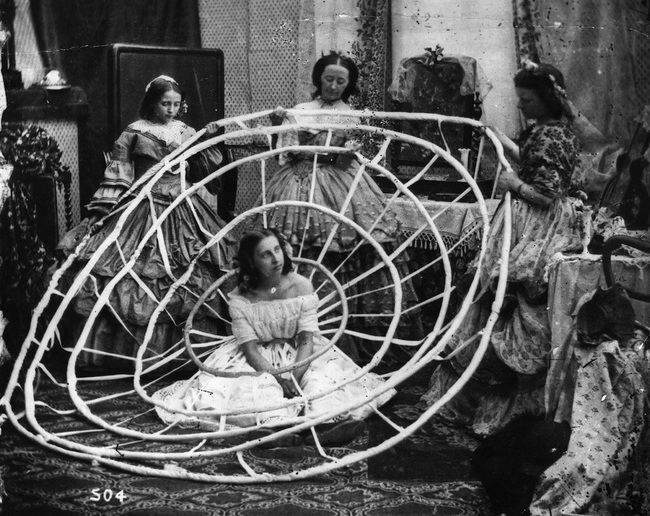
The Unwelcoming Tudo Ruf:


And let’s not forget 1960s Space Age Fashion:
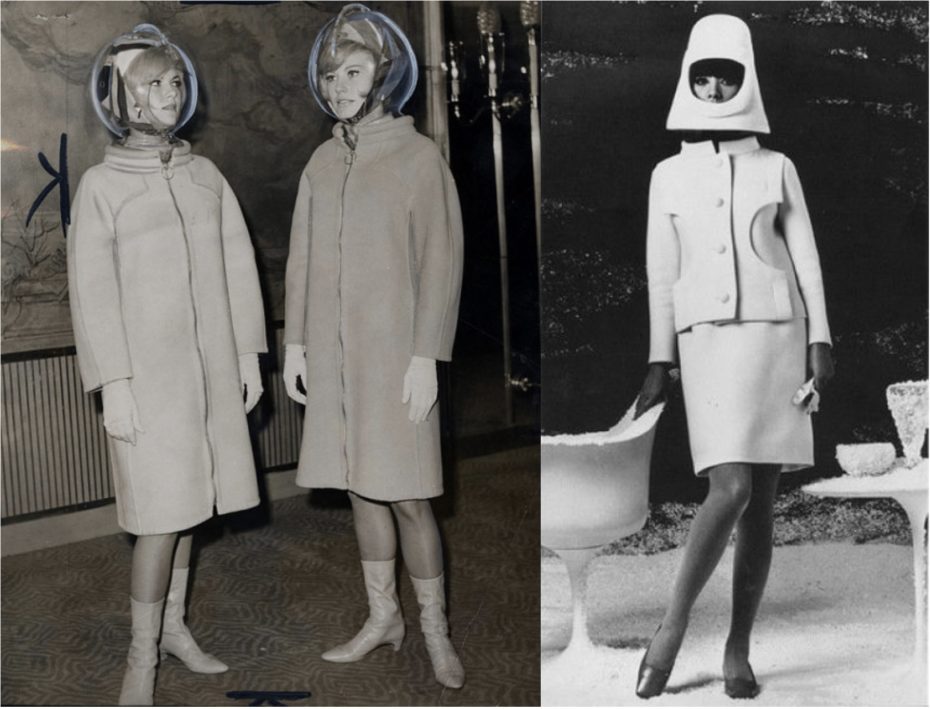


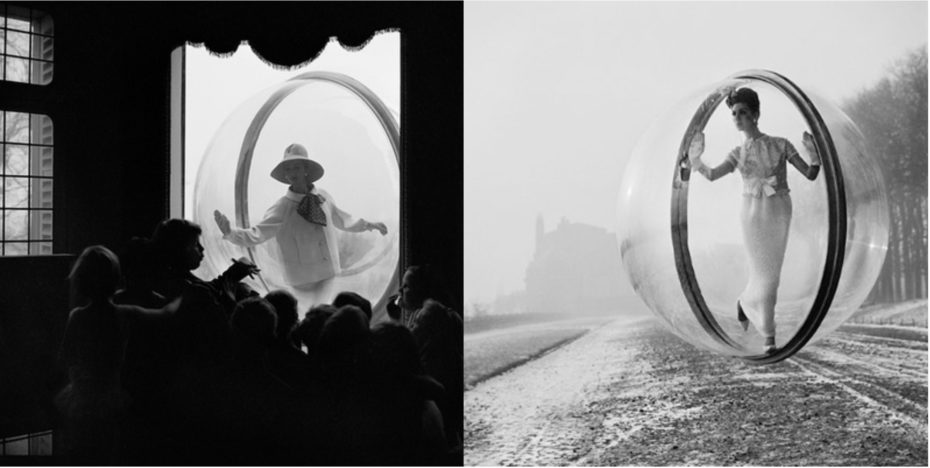
It’ll be interesting to see how the fashion world today reacts to the surreal situation we currently find ourselves in. Any thoughts?









